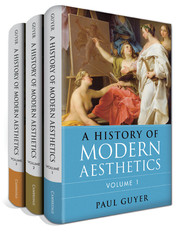9 - The American Reception of Expression Theory II
Cassirer and Langer
from Part Three - American Aesthetics in the First Half of the Twentieth Century
Published online by Cambridge University Press: 05 June 2015
Summary
In this chapter, we will see how the focus on art’s expression of emotion that began with Croce was filtered through the Neo-Kantian epistemology and philosophy of language of Ernst Cassirer’s “philosophy of symbolic forms,” which in turn influenced the aesthetics of his first and perhaps still most important American follower, Susanne Langer. Nelson Goodman can also be considered among the heirs of Cassirer, although he brought other epistemological and logical traditions to bear on the philosophy of art as well. but it would be too much of a strain on chronology to consider Goodman in this chapter, and discussion of him will therefore await the final chapter of this part.
Cassirer
It might seem surprising that the aesthetic theory of Ernst Cassirer (1874–1945), generally considered the heir to Herman Cohen and the leading figure in the second generation of Marburg Neo-Kantianism, should be considered in the midst of this discussion of American aesthetics rather than in a chapter on German theories. But not only did Cassirer spend the last years of his life in America; his most extended statement on aesthetics was also written in America, and his most immediate influence in aesthetics was in America, particularly in the work of Susanne K. Langer (1895–1985). Only decades after his death was there renewed interest in his work in Germany, leading to critical editions of his published and unpublished works. The inexorably intertwined history of German philosophy and German politics in the first half of the twentieth century no doubt had a large role to play in the interrupted reception of Cassirer’s work in Germany. For Cassirer was the most prominent Jewish philosopher in Germany after his mentor Hermann Cohen, but unlike Cohen, he had the misfortune to live into the time of the Third Reich and World War II, which caused radical disruptions in his life and career.
Information
- Type
- Chapter
- Information
- A History of Modern Aesthetics , pp. 335 - 366Publisher: Cambridge University PressPrint publication year: 2014
